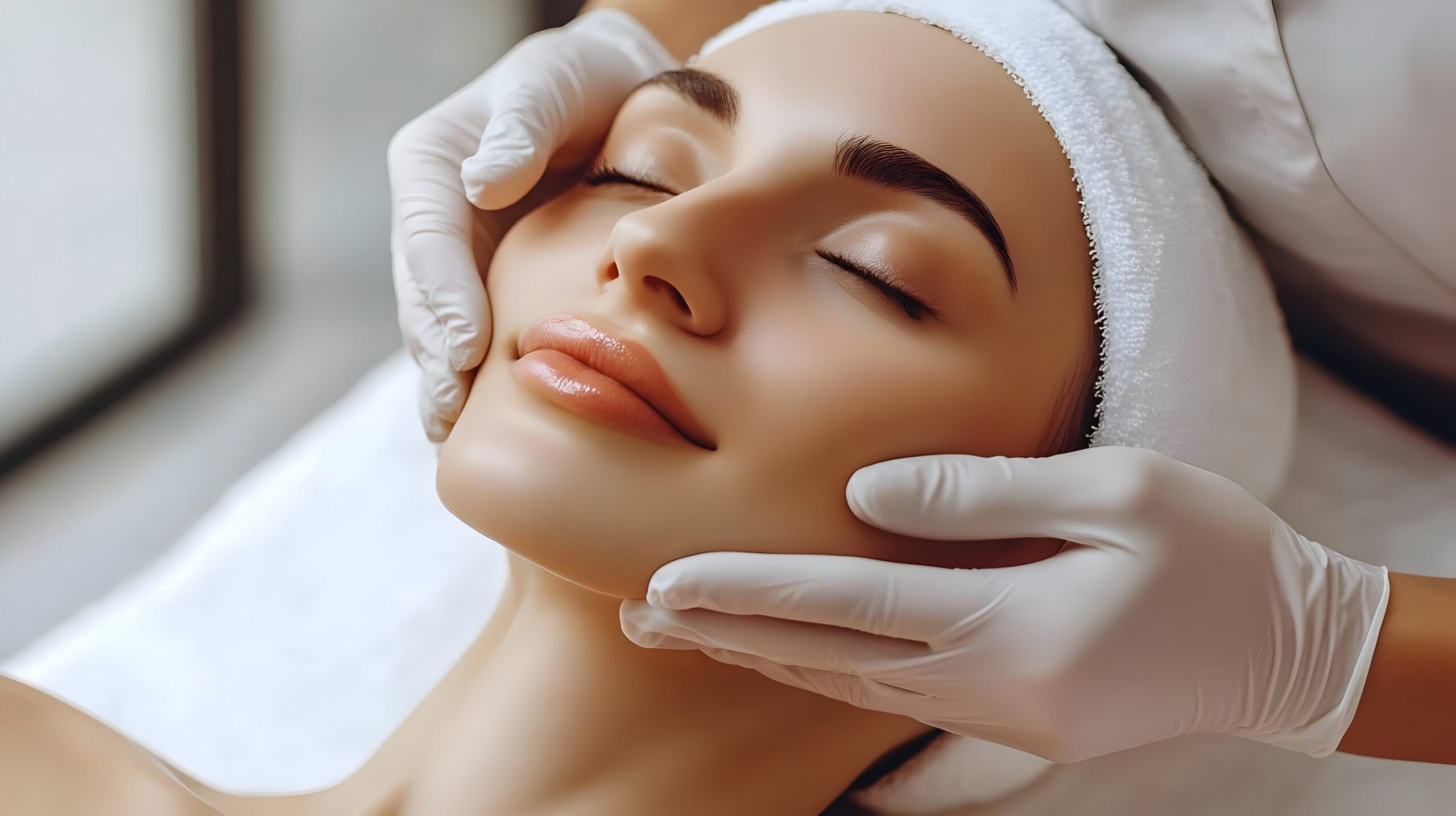The Ultimate Guide to Hyaluronic Acid: Hydration, Volume, and Elasticity for Your Patients

In the ever-evolving landscape of aesthetic medicine, hyaluronic acid has emerged as a cornerstone ingredient in non-surgical facial treatments, offering a multitude of advantages that appeal to both practitioners and patients alike. Known for its remarkable ability to enhance skin hydration, restore volume, and improve elasticity, hyaluronic acid is a powerful ally in the quest for youthful and rejuvenated skin. This guide will delve into the benefits of hyaluronic acid, explore its applications in facial treatments, and discuss the various formulations, such as hyaluronic acid serums, that can be utilized in clinical settings. By understanding how to harness the full potential of this versatile compound, doctors, clinics, and spas can provide their clients with effective and safe aesthetic solutions, while also addressing common concerns about hyaluronic acid side effects.
Understanding Hyaluronic Acid
Benefits of Hyaluronic Acid
Hyaluronic acid is celebrated for its multifaceted benefits, especially in aesthetic treatments. Foremost, it excels in skin hydration due to its ability to retain water, holding up to 1,000 times its weight in moisture. This property is crucial in maintaining skin plumpness and suppleness, making it a prime choice for hydration-focused treatments. Additionally, the volumizing effect of hyaluronic acid helps fill in fine lines and wrinkles, providing a smoother, more youthful appearance. Its ability to enhance skin elasticity further boosts its appeal, as it supports the skin’s structural integrity. Beyond these, hyaluronic acid benefits for the face include its biocompatibility and low potential for allergic reactions, making it a safe choice for a wide range of patients. As such, incorporating hyaluronic acid into treatment regimens can significantly elevate the efficacy of non-surgical aesthetic procedures, meeting patient demands for effective skin rejuvenation solutions.

Hyaluronic Acid Serum Insights
Hyaluronic acid serums have become a staple in both clinical and at-home skincare routines due to their potent hydrating properties. These serums deliver concentrated doses of hyaluronic acid directly to the skin, maximizing hydration and promoting a dewy, radiant complexion. The lightweight, fast-absorbing nature of these serums makes them suitable for all skin types, including sensitive and acne-prone skin. In clinical settings, hyaluronic acid serums can complement other aesthetic treatments, enhancing their effectiveness by keeping the skin well-hydrated and supple. This is particularly beneficial post-procedure, as hydrated skin can recover more quickly and maintain its youthful appearance longer. When recommending products, it is important to choose formulations that are free from irritants and designed for maximum penetration. By doing so, practitioners ensure that their patients receive the full spectrum of hyaluronic acid benefits, from improved skin texture to enhanced elasticity, without the worry of adverse effects.
Hyaluronic Acid Side Effects
While hyaluronic acid is largely celebrated for its safety and efficacy, understanding its potential side effects is essential for practitioners. Generally, side effects are minimal due to its natural presence in the human body, which reduces the likelihood of allergic reactions. However, when used in injectable forms, patients might experience temporary redness, swelling, or bruising at the injection site. These effects are typically mild and resolve quickly. In topical applications, such as serums, side effects are rare but can include slight irritation or dryness if the product is used excessively or if the skin is sensitive to formulation components. Educating patients on proper usage and setting realistic expectations can mitigate these concerns. It’s also advisable to conduct a thorough skin assessment and medical history review to rule out contraindications. By doing so, practitioners can confidently leverage hyaluronic acid’s benefits while minimizing risks, ensuring successful and satisfactory aesthetic outcomes for their clients.
Enhancing Facial Aesthetics
Hydration Boost for Skin
A well-hydrated skin is fundamental to achieving optimal facial aesthetics, and hyaluronic acid plays a pivotal role in this regard. Its exceptional capacity to attract and retain moisture makes it an ideal agent for boosting skin hydration. By binding water to skin cells, it helps maintain a plump, youthful appearance, reducing the visibility of fine lines and wrinkles. This hydration boost not only enhances the skin’s appearance but also improves its overall health, facilitating cell renewal and repair processes. In aesthetic treatments, incorporating hyaluronic acid can significantly amplify the results, providing a smooth and radiant complexion. Moreover, hydrated skin is more resilient and better equipped to withstand environmental stressors, including UV radiation and pollution. For practitioners, recommending hyaluronic acid-based treatments or products ensures that clients receive sustained hydration benefits, supporting both immediate and long-term skin health and aesthetic goals. This approach can help build trust and satisfaction among clients seeking effective skincare solutions.
Volume Restoration Techniques
Volume loss in the face is a common concern as skin ages, leading to sagging and the formation of wrinkles. Hyaluronic acid offers an effective solution through various volume restoration techniques. Injectable hyaluronic acid fillers are widely used to target areas such as the cheeks, under-eye regions, and nasolabial folds, where volume loss is most pronounced. These fillers work by replenishing the skin’s natural hyaluronic acid levels, enhancing facial contours and creating a more youthful appearance. The procedure is minimally invasive, with results that are immediate and can last several months. For practitioners, mastering the technique of administering these fillers is crucial to achieving natural-looking results that align with patient expectations. Additionally, discussing the potential benefits and temporary nature of the treatment helps manage patient expectations and build trust. By offering volume restoration solutions, clinics and spas can effectively address one of the primary aesthetic concerns of aging, ensuring client satisfaction and retention.
Improving Skin Elasticity
Maintaining skin elasticity is crucial for a youthful and resilient appearance, and hyaluronic acid plays an instrumental role in enhancing this quality. With age, the skin’s natural elasticity diminishes, leading to sagging and the formation of wrinkles. Hyaluronic acid helps counteract these effects by promoting better hydration and supporting the skin’s structural components. By attracting moisture, it keeps the skin plump and firm, facilitating improved elasticity. This is particularly beneficial in non-surgical aesthetic treatments where restoring the skin’s natural bounce is a primary goal. When incorporated into skincare regimens, hyaluronic acid serums and fillers can significantly enhance skin elasticity, leading to smoother and more youthful-looking skin. Practitioners can leverage hyaluronic acid’s properties to provide comprehensive skin rejuvenation solutions, addressing both superficial and deep-set signs of aging. Educating patients on the benefits of hyaluronic acid for improving elasticity can help them appreciate the long-term advantages of these treatments in maintaining skin health and aesthetics.
Practical Applications for Clinics
Hyaluronic Acid Benefits for Face
Hyaluronic acid is a versatile tool for clinics aiming to enhance facial aesthetics. Its benefits for the face are extensive, making it a cornerstone in non-surgical cosmetic treatments. Primarily, hyaluronic acid excels in hydrating the skin, which is essential for maintaining a healthy and vibrant appearance. It also helps in smoothing wrinkles and fine lines, offering clients a non-invasive option to achieve a youthful look. Additionally, its volumizing properties allow for facial contouring, addressing areas that have lost volume due to aging. For practitioners, hyaluronic acid provides the flexibility to tailor treatments based on individual patient needs, whether through serums for surface hydration or injectables for deeper, structural enhancements. Understanding these benefits allows clinics to offer comprehensive skincare solutions that meet varying patient desires. Moreover, educating clients about these advantages can foster confidence in the treatments, ensuring patient satisfaction and encouraging long-term engagement with the clinic’s services.
Non-Surgical Treatment Options
The demand for non-surgical aesthetic treatments is on the rise, and hyaluronic acid is at the forefront of these options. Offering a range of procedures that require no downtime, clinics can provide effective solutions for patients seeking subtle enhancements without undergoing surgery. Injectable hyaluronic acid fillers are popular for adding volume to areas like the cheeks and lips, or for filling deeper lines such as nasolabial folds. These treatments offer immediate results with minimal recovery time, making them appealing to clients with busy lifestyles. Additionally, topical hyaluronic acid serums used in conjunction with procedures like micro-needling can enhance skin hydration and texture, promoting a smoother complexion. The non-invasive nature of these treatments ensures they are accessible to a broader audience, including those who might be hesitant about more invasive procedures. By incorporating these options into their offerings, clinics can cater to a diverse clientele, meeting the growing preference for less invasive beauty solutions.
Patient Consultation Tips
Effective patient consultations are crucial for successful aesthetic treatments involving hyaluronic acid. Begin by understanding the patient’s specific concerns and desired outcomes. A thorough assessment of their skin condition and medical history helps tailor the treatment plan to their individual needs. Clear communication about the benefits of hyaluronic acid, such as its ability to enhance hydration, volume, and elasticity, can set realistic expectations. It is also important to discuss the potential side effects, reassuring patients about the minimal risks involved and the temporary nature of any adverse reactions. Visual aids, such as before-and-after photos, can be useful in illustrating potential outcomes, enhancing the patient’s confidence in the procedure. Finally, encourage open dialogue, allowing patients to ask questions and express any apprehensions. This collaborative approach not only builds trust but also ensures that patients feel informed and comfortable with their treatment choices, leading to higher satisfaction and loyalty.






